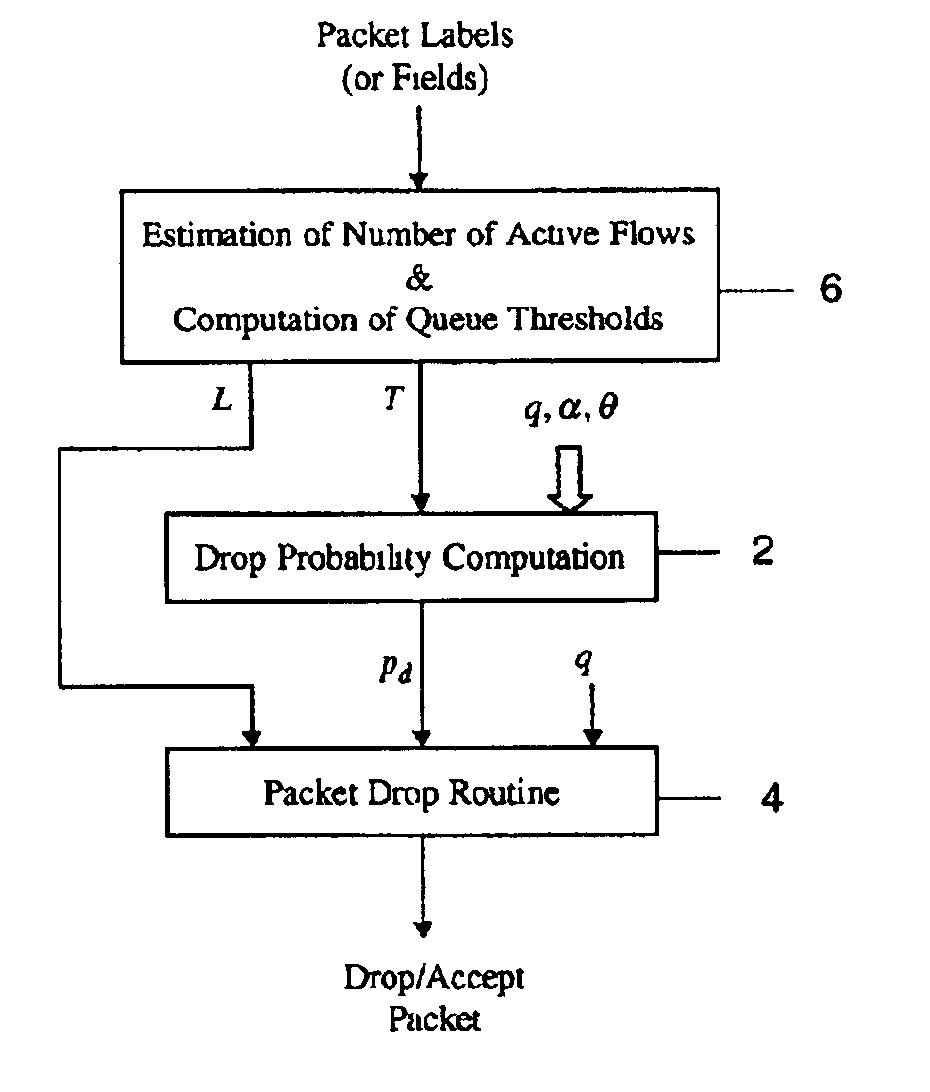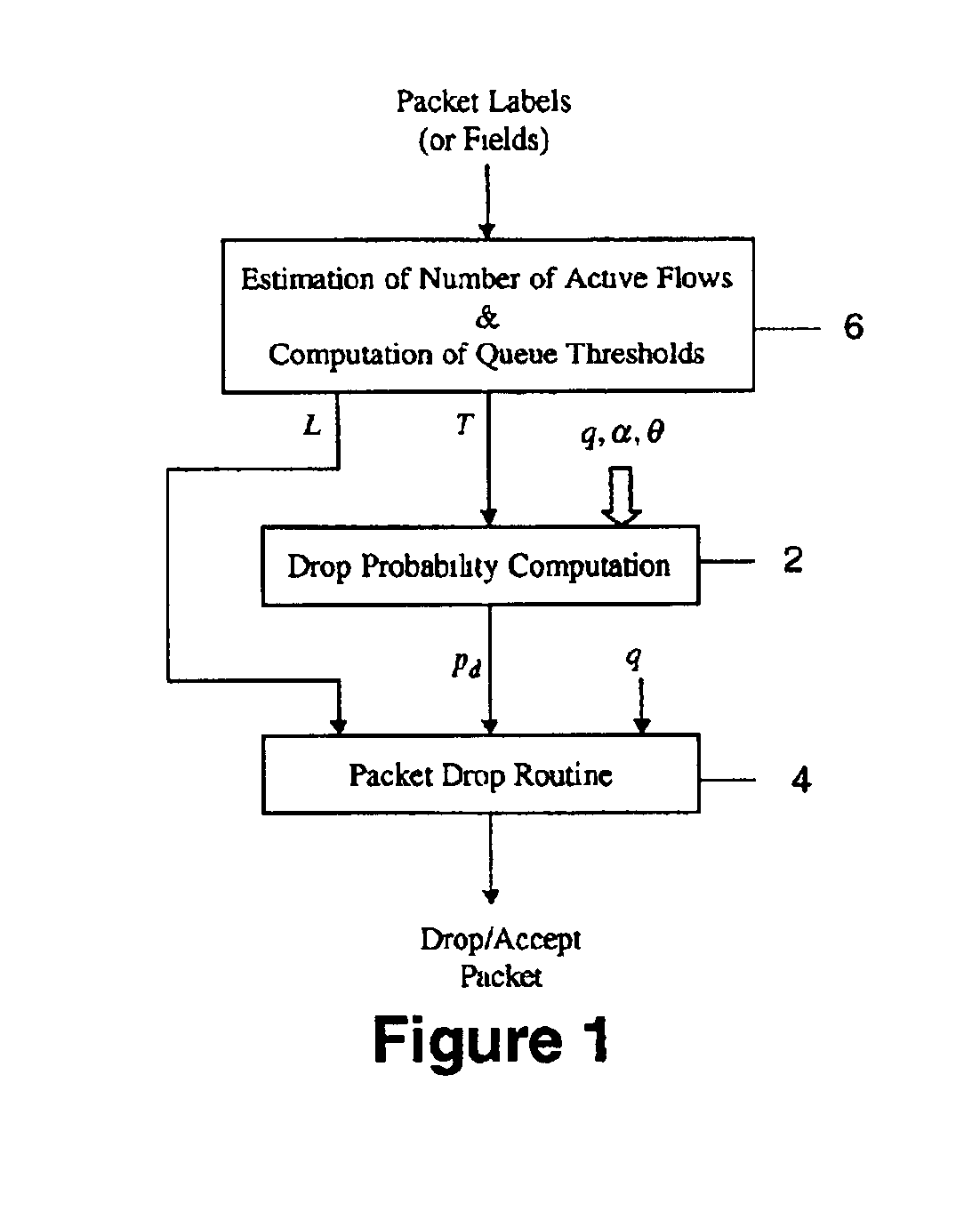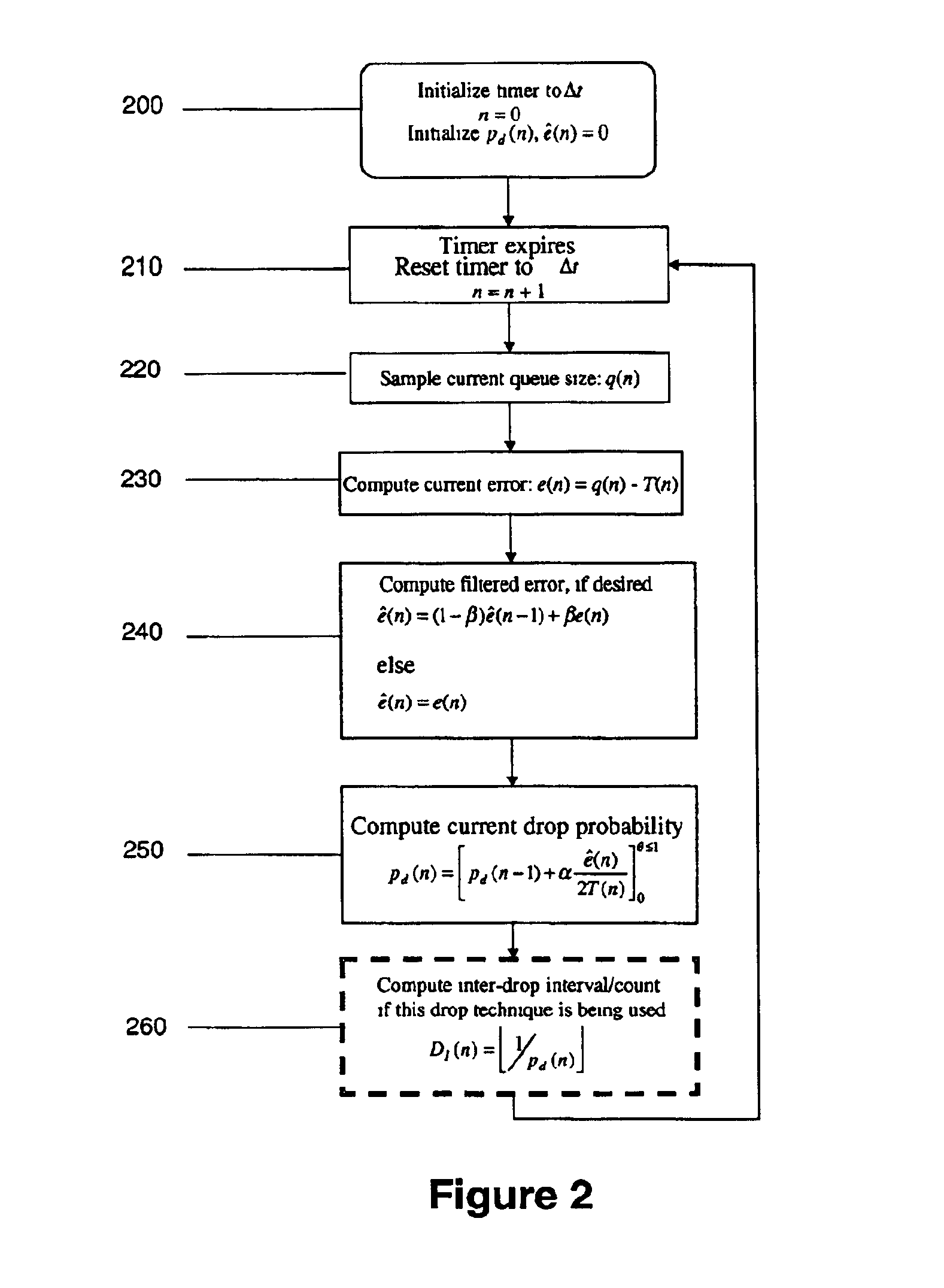Active queue management with flow proportional buffering
a technology of active queue management and buffering, applied in the field of network queue management, can solve the problems of packet loss, data transfer delay, and significant degraded tcp performance, and achieve the effect of reducing the number of packets
- Summary
- Abstract
- Description
- Claims
- Application Information
AI Technical Summary
Benefits of technology
Problems solved by technology
Method used
Image
Examples
Embodiment Construction
)
[0025]This application discloses an improved active queue management scheme which dynamically changes its queue threshold (or control target) settings as the number of connections or flows changes. By adjusting the queue thresholds as a function of the number of active flows, network devices (e.g., routers, switches, etc.) can effectively control packet losses and TCP timeouts while maintaining high link utilization. The technique also allows a network to support a larger number of connections during congestion periods. The scheme proposed here addresses the issue of queue threshold setting in proportion to the active number of flows. In some embodiments of the scheme, an estimate of the number of active flows is used to compute a queue threshold (or control target) at which the queue size should be maintained.
[0026]A high-level description of the overall active queue management scheme according to one embodiment is given in FIG. 1. This architecture implements the following module...
PUM
 Login to View More
Login to View More Abstract
Description
Claims
Application Information
 Login to View More
Login to View More - R&D
- Intellectual Property
- Life Sciences
- Materials
- Tech Scout
- Unparalleled Data Quality
- Higher Quality Content
- 60% Fewer Hallucinations
Browse by: Latest US Patents, China's latest patents, Technical Efficacy Thesaurus, Application Domain, Technology Topic, Popular Technical Reports.
© 2025 PatSnap. All rights reserved.Legal|Privacy policy|Modern Slavery Act Transparency Statement|Sitemap|About US| Contact US: help@patsnap.com



